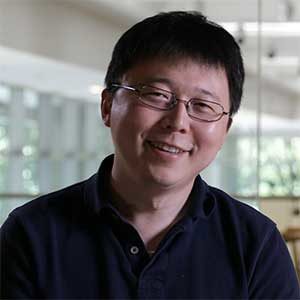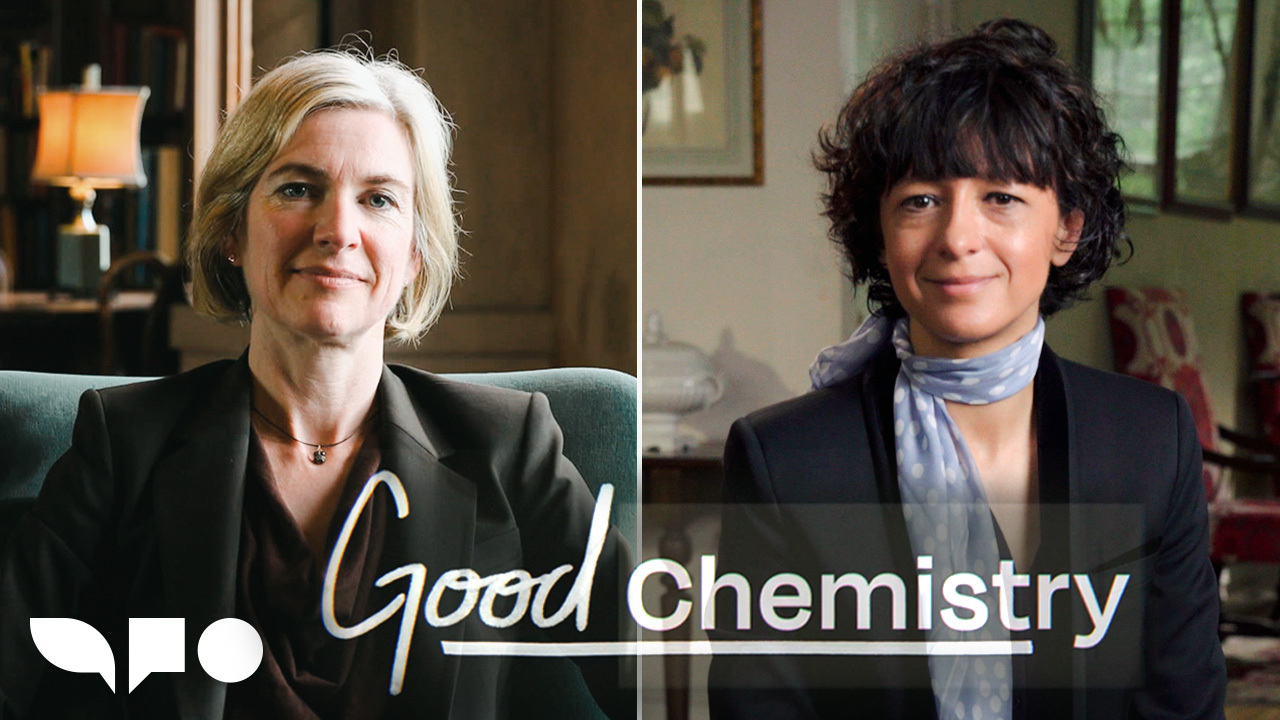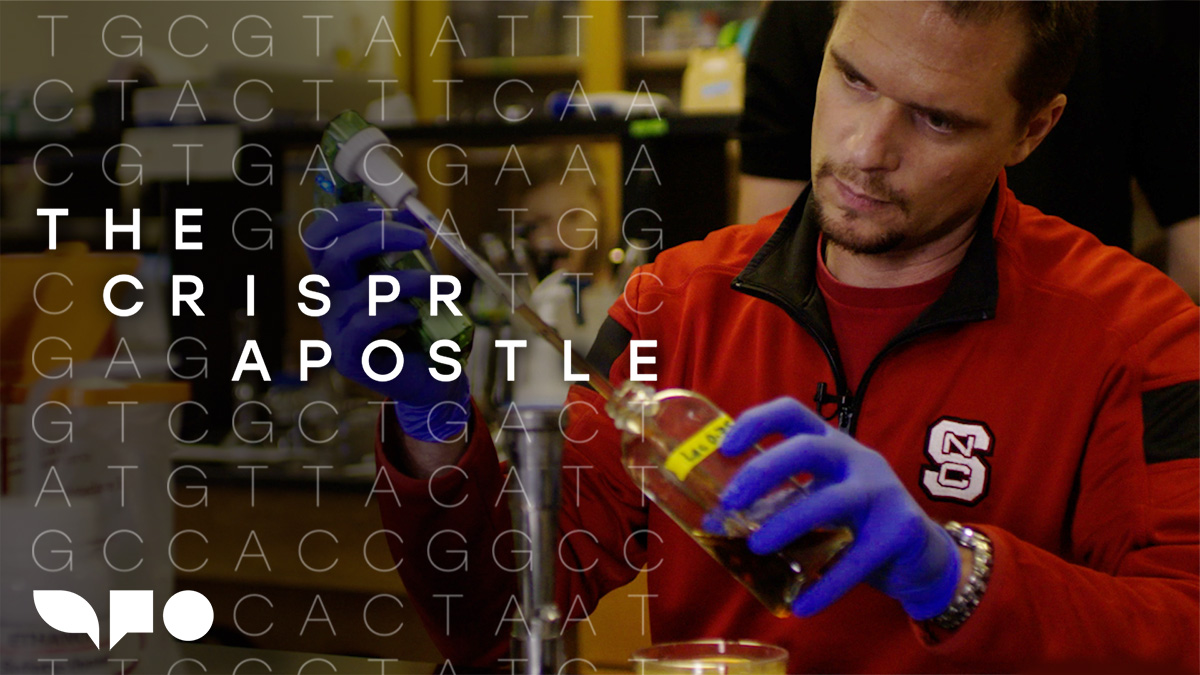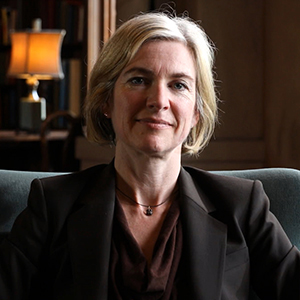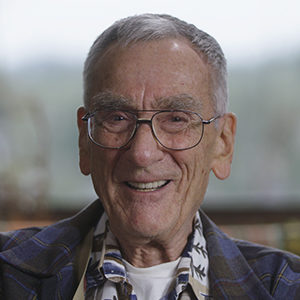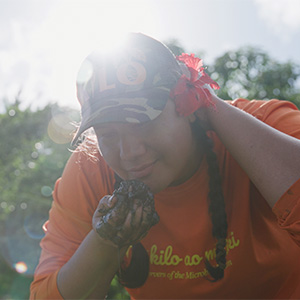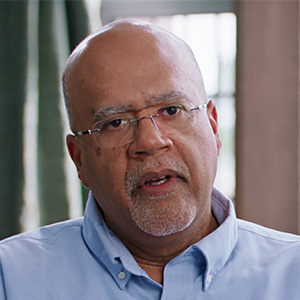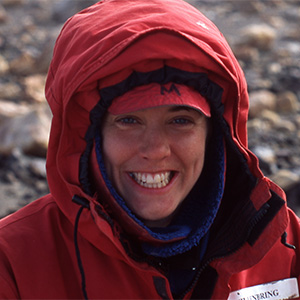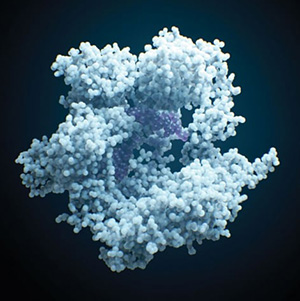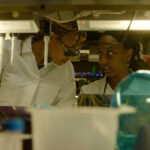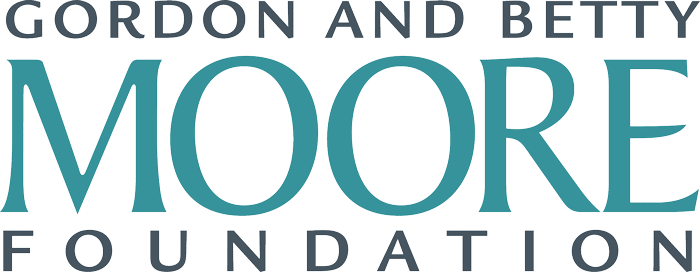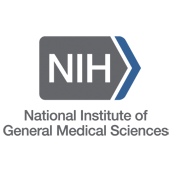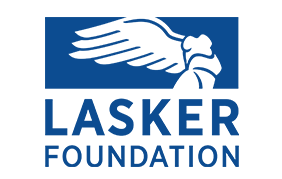Feng Zhang, Ph.D.: The thing that really excites me is the experience and the adventure of doing science. Even though we can’t visually see it, if we look at this test tube we know that there are billions of molecules in there. Diffusing, colliding, vibrating. Sometimes when they collide into another molecule, they will stick to that molecule and then that’s when a reaction will happen.
Oftentimes we’re exploring questions that no one has really explored before. You are the first person in the world and probably in the universe to really see that. Working in the lab takes a certain amount of focus, but when you’re focused on that it helps you not think about anything else. And it’s also just fun.
In middle school I really didn’t like biology. It was mostly about taking a really smelly paraformaldehyde-fixed frog and dissecting it and then labeling its different anatomical parts. And when they showed us the movie Jurassic Park that really captured my imagination.
Jurassic Park audio: A DNA strand like me is a blueprint for building a living thing.
Zhang: The concept that you can alter DNA, that DNA is a blueprint for life really resonated with me. And so I thought it’d be great to learn more about biology from that point on.
In order to treat diseases, we need to know more about how genes underlie human health and how mutations lead to disease. The beauty of the scientific ecosystem is that we build our work on the shoulders of giants.
Reporter #1: Research on DNA is one of the great new challenges in science.
Reporter #2: Using modern techniques the chromosomes can be removed from the nucleus and chemically analyzed.
Reporter #3: Since 1986 scientists have been mapping and sequencing the 3 billion nucleotides contained in the human genome.
Zhang: One of the major advances that we have made in biology over the past couple decades has been a completion of the human genome.
Reporter #4: It’s an incredibly detailed blueprint for building a human cell.
Tony Blair: A revolution in medical science whose implications far surpass even the discovery of antibiotics.
Zhang: So now we know every single letter in the human DNA, one tantalizing thought is, “Why don’t we go into our DNA, replace the deleterious genes, and then also put in the beneficial ones?” Turns out that’s where gene editing comes in. Gene editing allows us to perturb one gene at a time, and that makes it possible to study more complex gene interactions in cells.
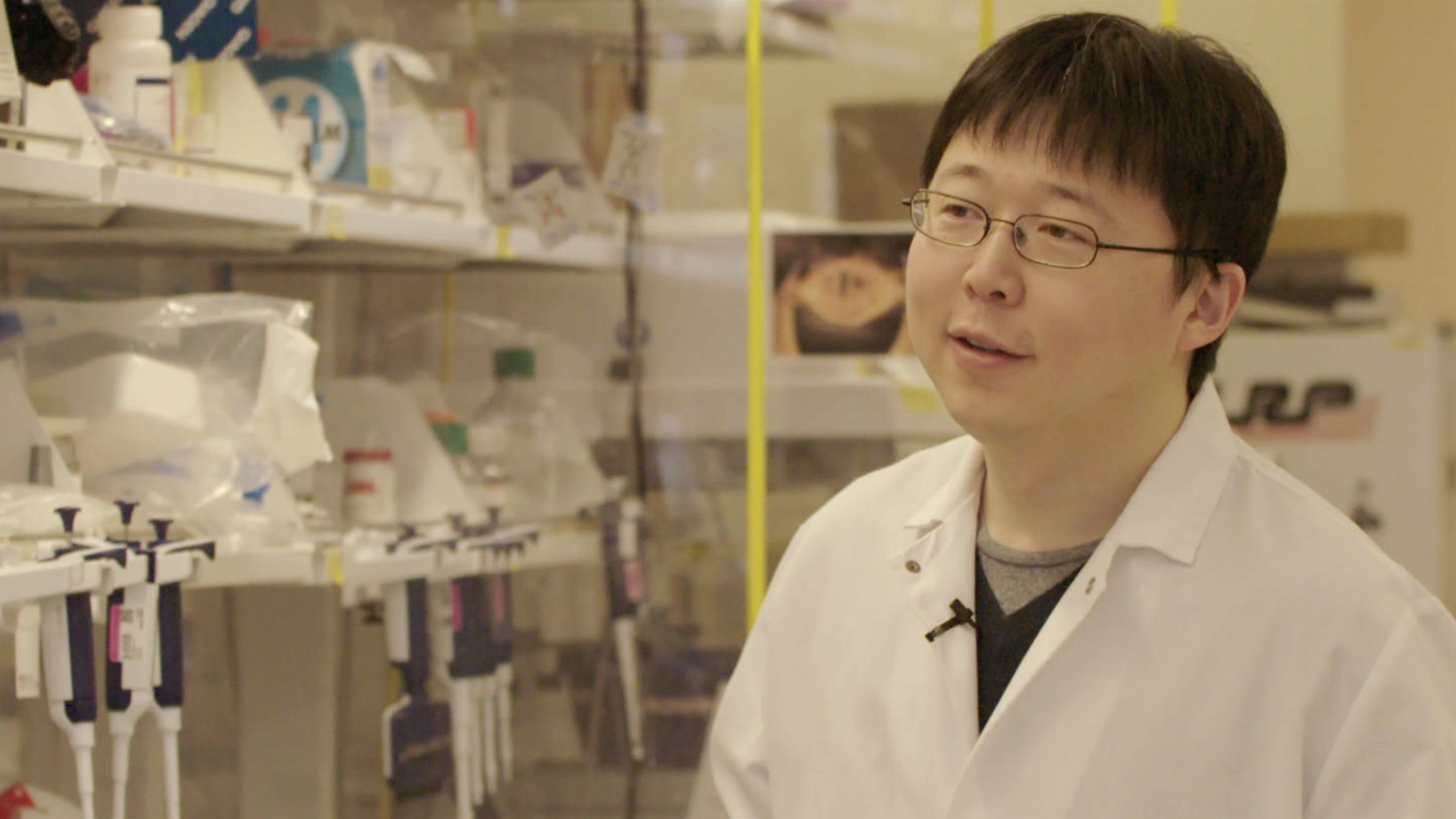
First and foremost we need to be able to cut DNA before we can edit the genome. You can think of it like a cursory Microsoft Word. Wherever you make a cut you can backspace and delete and you can type in a new word.
When I first started working on genome editing our ability to cut DNA in specific spots in the genome was pretty challenging. The tools compared to what I have today are not nearly as easy to use, not nearly as efficient.
One of the methods we used was called Zinc Finger Nucleus. Zinc finger proteins are found in many different types of organisms, including the human genome. They naturally bind DNA sequences. But by engineering the zinc-finger protein, it is possible to change what sequence it recognizes. We can use it to then bring nucleuses, which are scissors for cutting DNA, to a specific spot. But engineering the zinc-finger protein turned out to be really challenging.
Around that time a couple groups of plant biologists had described a new protein called TALE, which modulate genes in plants. I have worked with these proteins, changed their compositions so that they would recognize a new sequence of DNA in the human cell. And I found out that the TALEN system can cut DNA pretty well. Much better than using finger proteins. But even though it can work it’s still pretty cumbersome.
To engineer a zinc-finger or TALEN protein you have to make a brand new protein. This is usually done by taking an existing protein and then introducing many many mutations to randomly change this protein and then select from that whole pool of many different proteins hoping that one of them will work. That is a very laborious procedure. It will take even an expert many months to perturb a single gene. And so I was on the lookout for new systems where you don’t have to engineer the protein, which is what makes TALEs and zinc-fingers so difficult.
I first learned about CRISPR in this room here. I had just started my lab here at the Broad Institute in the beginning of 2011. There was a scientist talking about his research in enterococcus bacteria and I was sitting in the back of the room, sort of dozing off, but he mentioned that there are also these “CRISPR nucleuses” in his system. At the time I was working on TALE nucleuses, so when I heard the word “nucleus,” that immediately caught my attention.
CRISPR is a very abundant system that protects bacteria from viruses. You can find them in over 60% of bacteria that live in this world. The CRISPR system has a protein called Cas9. Cas9 is guided by a RNA that’s programmed to recognize virus DNA. And when that RNA guide matches the target, Cas9 will be programmed to cut DNA. And once it makes the break it doesn’t do any more damage than that.
What’s so exciting about CRISPR is that we can easily reprogram Cas9 to recognize a different DNA sequence. And so I thought, “This is really cool. Let’s test it to see if we can transfer it to human cells and engineer it so that we can edit the genome.” And it worked. The CRISPR system was able to edit the DNA in the human cell much more efficiently than zinc-fingers or TALE nucleuses.
Zinc-finger proteins recognize DNA through protein interaction with DNA and there isn’t a one-to-one correspondence. There are 20 different amino acids that you can find in the protein and it’s hard to know which one and in which context the amino acid will recognize that specific DNA letter.
In the context of CRISPR, you are using RNA to recognize DNA and so there is a correspondence. A base pairs with a U and then G base pairs with a C. And so if you know the DNA sequence you can very quickly write out what the RNA sequence should be. The difference is really night and day.
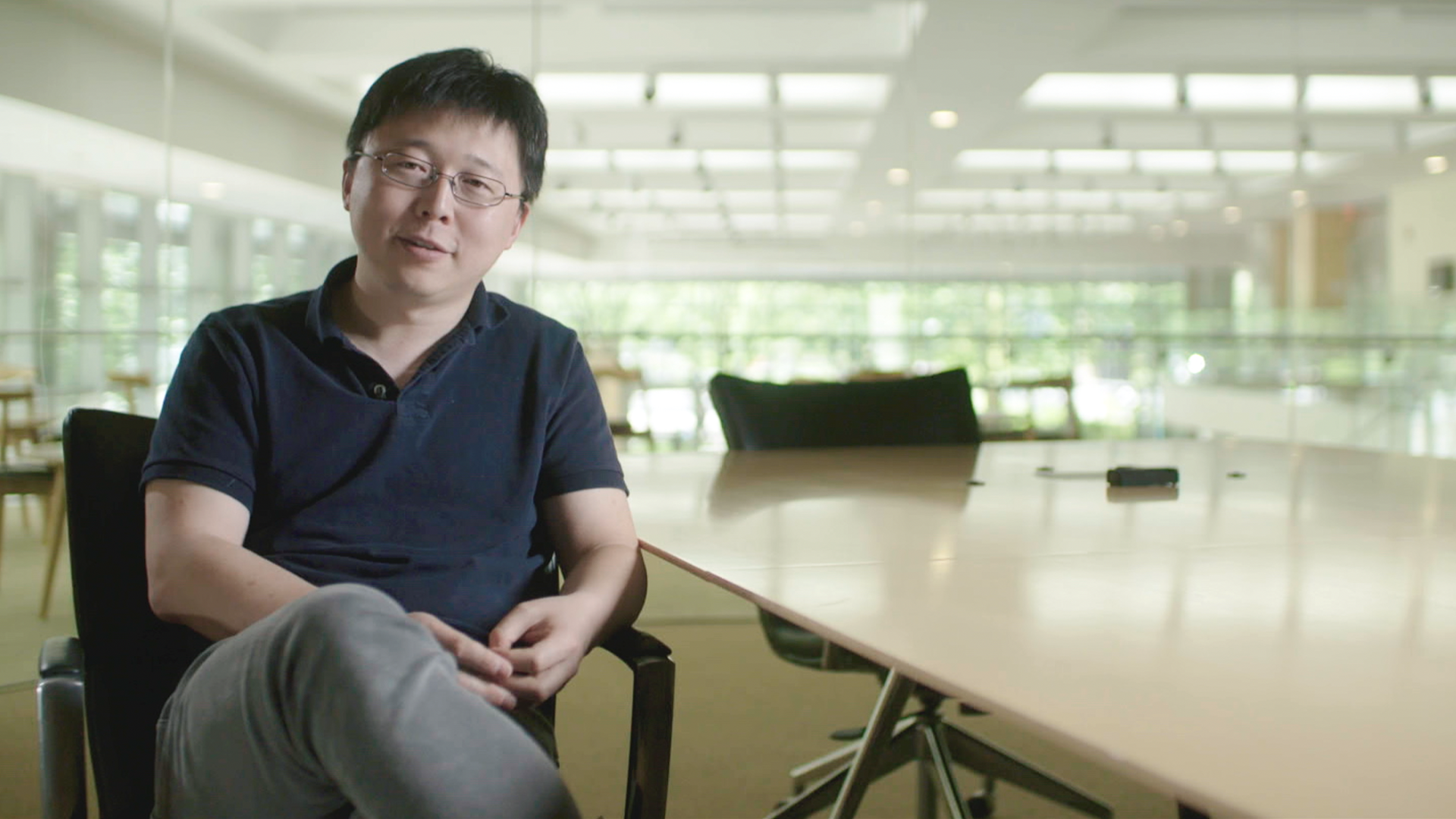
CRISPR is one of many tools that are making biological research faster and more precise. We can modify multiple genes at once in multiple cell lines, all in a matter of a couple weeks. And that kind of acceleration is what’s really exciting.
In the future we’ll be able to understand it more and we’ll be able to engineer it more. And through that, new ways of therapeutics that really go at the root cause of disease, rather than just the symptoms, will become a reality.
And of course I think we need to proceed cautiously. Biology is very complicated. Most of the mutations that we have found that reduce disease risk also have complex interactions with other disease processes.
Let me give you one example. There’s a gene called CCR5 and there’s a small percentage of individuals that naturally don’t have it and they are immune to HIV infection. So you may think that we can get rid of this CCR5 gene and then make people no longer susceptible to HIV. If that’s true that’s good, but turns out that this particular mutation makes someone more susceptible to West Nile virus. And that trade off is something that I don’t think we are equipped to make that judgment. Even though we don’t have a West Nile virus epidemic right now, it doesn’t mean that there won’t be one in the future.
There’s just so much more that we don’t know. And we don’t know what we don’t know. And that’s what makes biology so fascinating, but also treatment of disease so challenging. As we go forward there will be many new tools that we need to develop to understand biology. We need to know more.
- Cong L, Ran FA, Cox D, Lin S, Barretto R, Habib N, Hsu PD, Wu X, Jiang W, Marraffini LA, Zhang F. Multiplex Genome Engineering Using CRISPR/Cas9 Systems. Science. 2013 Feb 15;339(6121):819-23. doi: 10.1126/science.
- Mahfouz M, Piatek A, and Stewart CN. Genome engineering via TALENs and CRISPR/Cas9 systems: challenges and perspectives. Plant Biotechnology Journal (2014) 12, pp. 1006–1014 doi: 10.1111/pbi.12256
- iBiology’s CRISPR-Cas Technology resources (videos)
- Explorer’s Guide to Biology resources (primarily text):
- Protein Data Bank: Molecule of the Month:
- Genome Editing Techniques: ZFNs, TALENs, and CRISPR (video)
Producers: Shannon Behrman, Meredith DeSalazar, Sarah Goodwin, Regina Sobel
Cinematographers: Derek Reich, Amanda McGrady
Interview by: Adam Bolt
Editor: Lee Rossoff
Graphics: Chris George, Maggie Hubbard
Associate Producer: Shelley Elizabeth Carter
Executive Producers: Shannon Behrman, Sarah Goodwin, Elliot Kirschner
